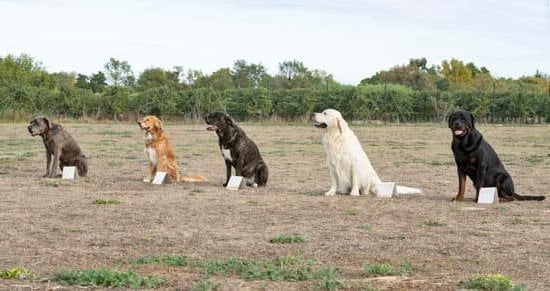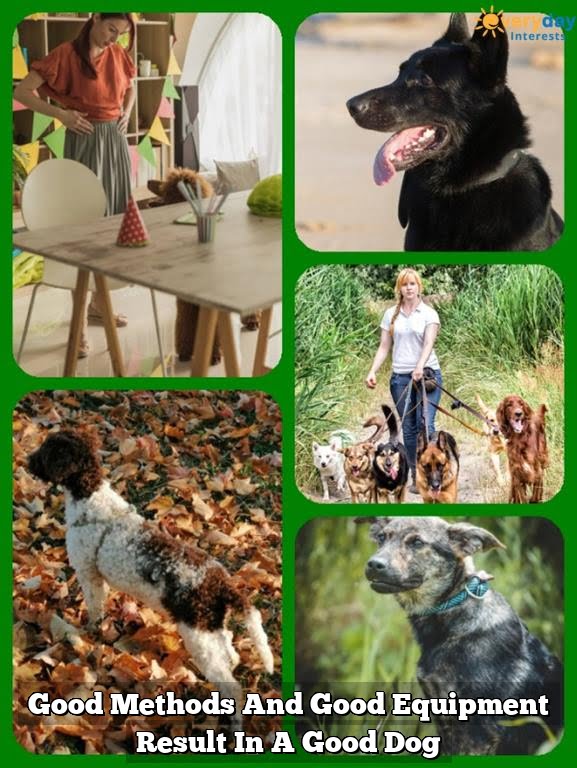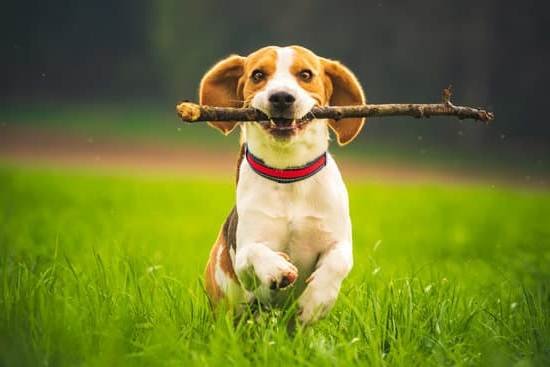Have you ever wondered how good are trained dog scent trackers in locating a specific target through their exceptional sense of smell? Trained dog scent trackers play a crucial role in various fields, including law enforcement, search and rescue operations, and conservation efforts. In this article, we will delve into the fascinating world of canine scent tracking and explore the science behind these remarkable abilities.
The sense of smell is one of a dog’s most powerful and extraordinary capabilities. Their noses contain hundreds of millions more scent receptors than humans, allowing them to detect even the faintest odors with incredible accuracy. Understanding the role of trained dog scent trackers is essential in recognizing their potential contributions to society.
In the following sections, we will take a closer look at the science behind canine scent tracking, the training process for these remarkable animals, their accuracy and reliability in different situations, real-life applications in various fields, factors that can affect scent tracking abilities, success stories showcasing their impact, and new advancements in training methods. Join us as we uncover the world of trained dog scent trackers and explore their vital role in making a difference.
The Science Behind Canine Scent Tracking
Dogs have an incredible sense of smell, which makes them well-suited for scent tracking. The science behind canine scent tracking is truly fascinating, as it showcases the amazing abilities of a dog’s nose. Unlike humans, who have about 5 to 6 million olfactory receptors, dogs have up to 300 million. This allows them to detect scents at incredibly low concentrations and in a wide range of environments.
The anatomy of a dog’s nose also contributes to their impressive scent tracking abilities. Dogs have a special structure called the Jacobson’s organ, or the vomeronasal organ, which allows them to detect pheromones and other chemical signals that are imperceptible to humans. In addition, the large surface area inside a dog’s nose is lined with millions of sensory receptor cells that play a crucial role in detecting and processing different scents.
Furthermore, the way in which a dog processes scent information in their brain is unique and highly efficient. When a dog sniffs a scent, they can process individual components of that smell separately, allowing them to differentiate between different odors within complex mixtures.
This exceptional ability makes them valuable assets in various fields such as law enforcement, search and rescue operations, and conservation efforts. Understanding the science behind canine scent tracking sheds light on just how good trained dog scent trackers can be at their job.
Training Process
Understanding the Canine Nose
Dogs have an incredible sense of smell that is significantly more powerful than that of humans. Their ability to detect scents is due to the millions of scent receptors in their noses, as opposed to the mere thousands found in human noses. This remarkable olfactory system allows dogs to pick up and distinguish a wide range of scents, making them invaluable assets in scent tracking operations.
Basic Training Techniques
The process of training dogs for scent tracking involves a combination of natural ability, basic obedience training, and specialized techniques. The first step typically involves teaching the dog to identify and associate a particular scent with a reward or positive reinforcement. This may start with simple exercises such as having the dog search for a hidden scented item in a controlled environment.
As the dog progresses, trainers gradually increase the complexity and difficulty of the scent tracking tasks, such as introducing distractions or working in different terrains. Dogs are also taught to discriminate between different scents and follow specific trails based on individual characteristics of each target odor.
Specialized Training Programs
Many law enforcement agencies, search and rescue teams, and conservation organizations offer specialized training programs for scent tracking dogs. These programs are designed to hone the natural abilities of dogs while providing them with focused instruction on how to apply those skills in real-life scenarios. By simulating various environments and scenarios during training, these programs ensure that trained dog scent trackers are well-prepared for any situation they may encounter in their fieldwork.
Understanding the intricacies of the training process can shed light on just how good trained dog scent trackers can be at their jobs. With proper training and dedication, these remarkable animals can make an immense difference in various critical fields.
Accuracy and Reliability
The accuracy and reliability of trained dog scent trackers are truly remarkable, making them invaluable assets in various situations. These specially trained dogs have the ability to detect scents with an incredible level of precision, often surpassing the capabilities of human search teams and technological devices. Their acute sense of smell allows them to track down specific odors, even in challenging environments, making them indispensable in law enforcement, search and rescue missions, and conservation efforts.
One key factor in understanding the effectiveness of trained dog scent trackers is their olfactory system. Dogs have up to 300 million olfactory receptors in their noses, compared to about 5-6 million in humans.
This complex system allows them to distinguish between different scents and follow particular tracks with astounding accuracy. Their ability to detect scents at extremely low concentrations and over long distances makes them ideal for locating missing persons, detecting contraband items, or even finding wildlife in expansive natural areas.
Furthermore, extensive training plays a crucial role in honing a dog’s scent tracking abilities. The training process involves exposing the dog to various scents and teaching them how to associate a specific odor with a reward.
This conditioning helps the dogs develop the skills needed to discriminate between different scents and follow a target scent trail effectively. Additionally, ongoing reinforcement and practice are vital for maintaining the proficiency of trained dog scent trackers and ensuring their reliability in real-life scenarios.
| Trained Dog Scent Trackers | Key Points |
|---|---|
| Olfactory System | Dogs have up to 300 million olfactory receptors |
| Extensive Training | Dogs are exposed to various scents and taught how to associate a specific odor with a reward |
Real Life Applications
Law Enforcement
Trained dog scent trackers play a crucial role in law enforcement operations. These highly skilled canines are utilized to track suspects, locate missing persons, and uncover evidence at crime scenes. Their ability to detect and follow specific scents makes them invaluable assets in criminal investigations. Whether it’s detecting illegal substances or finding a hidden weapon, trained dog scent trackers have proven to be highly effective in assisting law enforcement agencies.
Search and Rescue
In search and rescue operations, time is of the essence, and trained dog scent trackers can significantly expedite the process of locating missing individuals. These dogs are capable of covering large areas in a relatively short amount of time, making them indispensable in wilderness searches as well as urban disasters. Their keen sense of smell allows them to pick up on human scent even in challenging conditions, increasing the chances of a successful rescue mission.
Conservation Efforts
Trained dog scent trackers also contribute to conservation efforts by aiding researchers in studying wildlife populations. These specially trained canines assist conservationists by tracking endangered species, identifying invasive species, detecting poaching activities, and monitoring animal migration patterns. The use of trained dog scent trackers has proven to be instrumental in protecting vulnerable wildlife populations and preserving natural habitats.
These real-life applications demonstrate just how good trained dog scent trackers truly are when it comes to fulfilling essential roles in law enforcement, search and rescue operations, and conservation efforts. Whether it’s locating a suspect, finding a lost hiker, or preserving endangered species, these remarkable animals continue to make a significant impact on diverse fields due to their exceptional olfactory capabilities.
Factors Affecting Scent Tracking
Dogs have an exceptional sense of smell, and their ability to track scents makes them invaluable in various fields such as law enforcement, search and rescue, and conservation efforts. However, there are several factors that can affect a dog’s scent tracking abilities. Understanding these variables is crucial to maximizing the effectiveness of trained dog scent trackers.
One important factor that can impact a dog’s ability to track scents is the weather conditions. Extreme temperatures, humidity, and wind can all influence how scents travel through the air and how long they remain detectable to a dog’s nose.
For example, strong winds can disperse scents, making it more challenging for a dog to follow a trail accurately. On the other hand, certain weather conditions like rain can actually help dogs detect scents more effectively due to the moisture in the air holding onto odors.
Another factor that plays a significant role in scent tracking is the age and health of the dog. A dog’s sense of smell may decline with age or if they develop respiratory or nasal issues. Additionally, individual breeds may have different scent tracking abilities due to variations in their nasal anatomy and genetics. It is essential for handlers and trainers to be aware of these factors when selecting and working with scent tracking dogs.
The type of terrain where scent tracking takes place also affects a dog’s ability to follow a trail. Urban environments with numerous conflicting scents from human activity can be more challenging for dogs compared to rural areas with more natural scents. Additionally, different surfaces like concrete, grass, or wooded areas can impact how well a scent holds and how easy it is for a dog to pick up on it.
| Variables Affecting Scent Tracking | Impact |
|---|---|
| Weather Conditions | Influences how scents travel through the air |
| Age and Health of the Dog | Affects sensitivity to scents and overall tracking ability |
| Type of Terrain | Different environments present various challenges for scent tracking dogs |
Success Stories
Trained dog scent trackers have proven to be invaluable assets in a wide range of fields due to their remarkable ability to follow and locate specific scents. Whether it’s aiding in search and rescue operations, assisting law enforcement agencies, or contributing to conservation efforts, these highly skilled canines have showcased their effectiveness time and time again. Below are some notable success stories that illustrate just how good trained dog scent trackers can be:
- In 2017, a trained search and rescue dog named Ruby played a pivotal role in locating a missing hiker in the rugged terrain of the Rocky Mountains. Despite challenging weather conditions, Ruby was able to track the scent of the lost individual and lead rescuers to their location, ultimately saving their life.
- In law enforcement, K9 units with specialized training in scent tracking have been instrumental in solving numerous criminal cases. For example, a police dog named Max helped officers apprehend a suspect involved in a hit-and-run incident by relentlessly following the trail of the perpetrator’s scent, leading to a successful arrest.
- Moreover, trained dog scent trackers have also made significant contributions to wildlife conservation efforts. One such instance involves a highly skilled detection dog named Luna who has been deployed to sniff out invasive plant species in sensitive ecological areas. Luna’s keen sense of smell has enabled conservationists to identify and eliminate harmful plant species that threaten the natural habitat of native flora and fauna.
These success stories serve as compelling evidence of just how good trained dogs scent trackers are at fulfilling their roles in making a difference across various sectors. Their exceptional olfactory capabilities paired with rigorous training make them indispensable allies in critical situations where their unique skills can mean the difference between life and death or the preservation of delicate ecosystems.
The Future of Scent Tracking
As technology continues to evolve, so does the field of scent tracking. New technologies are being developed to enhance the capabilities of trained dog scent trackers, making them even more effective in their roles. One of the most exciting advancements is the use of GPS tracking systems that can be attached to a dog’s collar.
These systems not only track the movements of the dog during a search operation but also provide real-time data on the scents they are detecting. This can greatly improve the efficiency and accuracy of scent tracking, especially in large search areas.
In addition to technological advancements, there have been significant developments in training methods for scent tracking dogs. Trainers are now incorporating innovative techniques such as scent discrimination training, which teaches dogs to differentiate between different scents and identify specific targets. By honing this skill, trained scent trackers can provide even more precise results in various scenarios, from search and rescue missions to law enforcement operations.
Moreover, ongoing research is exploring how factors such as weather conditions, terrain features, and even human activity can affect a dog’s ability to track scents accurately. By understanding these variables and their impact on scent tracking, trainers can adapt their methods and improve the overall effectiveness of trained dog scent trackers.
Overall, with these advancements in technology and training methods, the future looks promising for trained dog scent trackers. These developments not only enhance their capabilities but also contribute to their important role in various fields such as law enforcement, search and rescue efforts, and conservation initiatives. As technology continues to progress and our understanding of canine olfaction deepens, trained scent tracking dogs will undoubtedly play an essential role in diverse applications for years to come.
- GPS tracking systems improve efficiency
- Scent discrimination training enhances precision
- Research on environmental factors impacting scent tracking
Conclusion
In conclusion, the use of trained dog scent trackers is an invaluable and irreplaceable tool in various fields such as law enforcement, search and rescue, and conservation efforts. The incredible abilities of a dog’s nose and the rigorous training process they undergo make them highly accurate and reliable in tracking scents.
This has led to numerous success stories where trained dog scent trackers have made a significant impact in locating missing persons, detecting illegal substances, and aiding in wildlife conservation efforts.
The science behind canine scent tracking is truly remarkable, showcasing just how good trained dog scent trackers can be at their job. Their ability to distinguish specific scents and follow them over long distances or through challenging terrains is unmatched by any man-made technology. Additionally, ongoing advancements in training methods and new technologies are continuously improving the capabilities of these remarkable animals, ensuring that they remain at the forefront of scent tracking operations.
As we look towards the future of scent tracking, it is evident that trained dog scent trackers will continue to play a vital role in various fields. Their unique abilities and unwavering dedication make them an indispensable asset for law enforcement agencies, search and rescue teams, and conservation organizations.
It is clear that trained dog scent trackers are not only excellent at what they do but are also essential partners in ensuring the safety and well-being of individuals and wildlife alike.
Frequently Asked Questions
What Is the Best Dog for Tracking Scent?
The best dog for tracking scent is often considered to be the Bloodhound. With their incredible sense of smell and tracking instincts, they are often used by law enforcement and search and rescue teams.
How Many Miles Can a Dog Track a Scent?
Dogs can track a scent for many miles, with some breeds capable of following a trail for up to 20 miles or more. However, factors such as weather, terrain, and the strength of the scent can affect a dog’s tracking abilities.
Is Scent Training Good for Dogs?
Scent training is generally beneficial for dogs as it stimulates their natural instinct to use their sense of smell. It provides mental stimulation, builds confidence, and strengthens the bond between the owner and the dog. Additionally, scent training can help in teaching obedience and focus to dogs who may struggle with these skills.

Welcome to the blog! I am a professional dog trainer and have been working with dogs for many years. In this blog, I will be discussing various topics related to dog training, including tips, tricks, and advice. I hope you find this information helpful and informative. Thanks for reading!





